Venkat Dasari
Adaptive Stochastic Gradient Descent for Fast and Communication-Efficient Distributed Learning
Aug 04, 2022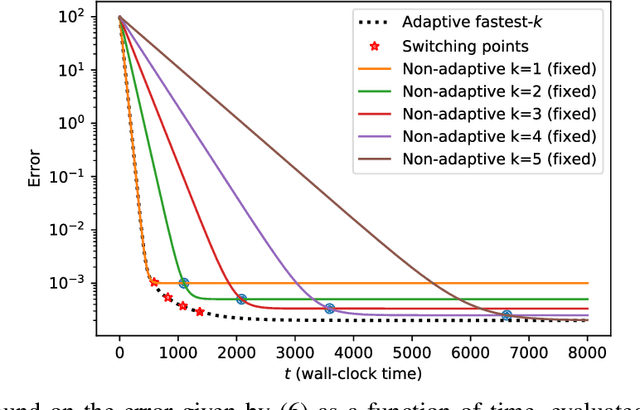
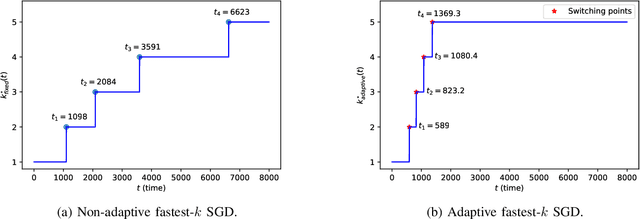
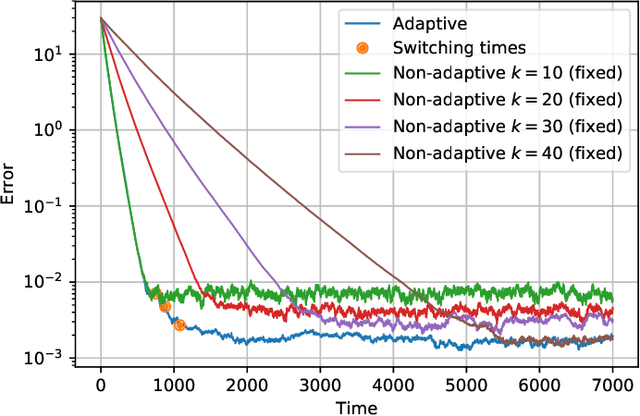
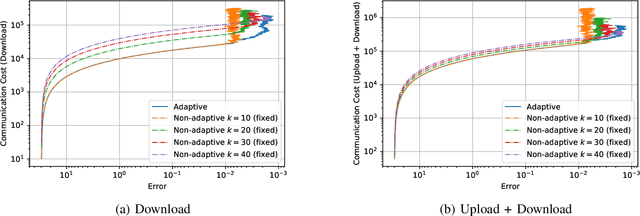
Abstract:We consider the setting where a master wants to run a distributed stochastic gradient descent (SGD) algorithm on $n$ workers, each having a subset of the data. Distributed SGD may suffer from the effect of stragglers, i.e., slow or unresponsive workers who cause delays. One solution studied in the literature is to wait at each iteration for the responses of the fastest $k<n$ workers before updating the model, where $k$ is a fixed parameter. The choice of the value of $k$ presents a trade-off between the runtime (i.e., convergence rate) of SGD and the error of the model. Towards optimizing the error-runtime trade-off, we investigate distributed SGD with adaptive~$k$, i.e., varying $k$ throughout the runtime of the algorithm. We first design an adaptive policy for varying $k$ that optimizes this trade-off based on an upper bound on the error as a function of the wall-clock time that we derive. Then, we propose and implement an algorithm for adaptive distributed SGD that is based on a statistical heuristic. Our results show that the adaptive version of distributed SGD can reach lower error values in less time compared to non-adaptive implementations. Moreover, the results also show that the adaptive version is communication-efficient, where the amount of communication required between the master and the workers is less than that of non-adaptive versions.
Virtuoso: Video-based Intelligence for real-time tuning on SOCs
Dec 24, 2021



Abstract:Efficient and adaptive computer vision systems have been proposed to make computer vision tasks, such as image classification and object detection, optimized for embedded or mobile devices. These solutions, quite recent in their origin, focus on optimizing the model (a deep neural network, DNN) or the system by designing an adaptive system with approximation knobs. In spite of several recent efforts, we show that existing solutions suffer from two major drawbacks. First, the system does not consider energy consumption of the models while making a decision on which model to run. Second, the evaluation does not consider the practical scenario of contention on the device, due to other co-resident workloads. In this work, we propose an efficient and adaptive video object detection system, Virtuoso, which is jointly optimized for accuracy, energy efficiency, and latency. Underlying Virtuoso is a multi-branch execution kernel that is capable of running at different operating points in the accuracy-energy-latency axes, and a lightweight runtime scheduler to select the best fit execution branch to satisfy the user requirement. To fairly compare with Virtuoso, we benchmark 15 state-of-the-art or widely used protocols, including Faster R-CNN (FRCNN), YOLO v3, SSD, EfficientDet, SELSA, MEGA, REPP, FastAdapt, and our in-house adaptive variants of FRCNN+, YOLO+, SSD+, and EfficientDet+ (our variants have enhanced efficiency for mobiles). With this comprehensive benchmark, Virtuoso has shown superiority to all the above protocols, leading the accuracy frontier at every efficiency level on NVIDIA Jetson mobile GPUs. Specifically, Virtuoso has achieved an accuracy of 63.9%, which is more than 10% higher than some of the popular object detection models, FRCNN at 51.1%, and YOLO at 49.5%.
Adaptive Distributed Stochastic Gradient Descent for Minimizing Delay in the Presence of Stragglers
Feb 25, 2020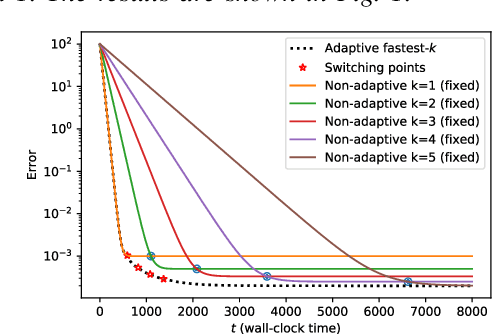
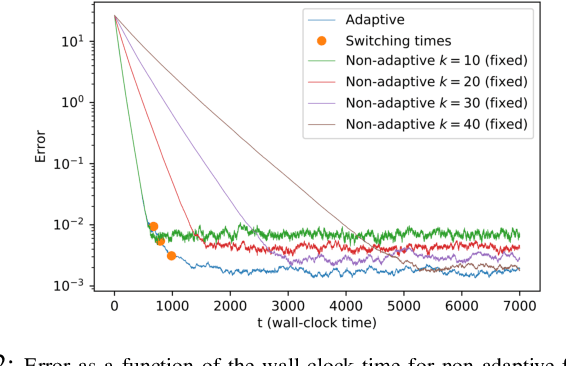
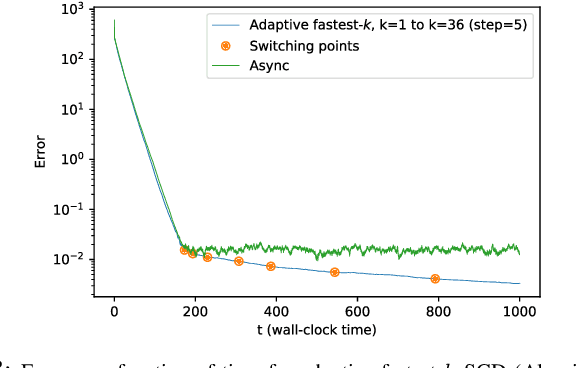
Abstract:We consider the setting where a master wants to run a distributed stochastic gradient descent (SGD) algorithm on $n$ workers each having a subset of the data. Distributed SGD may suffer from the effect of stragglers, i.e., slow or unresponsive workers who cause delays. One solution studied in the literature is to wait at each iteration for the responses of the fastest $k<n$ workers before updating the model, where $k$ is a fixed parameter. The choice of the value of $k$ presents a trade-off between the runtime (i.e., convergence rate) of SGD and the error of the model. Towards optimizing the error-runtime trade-off, we investigate distributed SGD with adaptive $k$. We first design an adaptive policy for varying $k$ that optimizes this trade-off based on an upper bound on the error as a function of the wall-clock time which we derive. Then, we propose an algorithm for adaptive distributed SGD that is based on a statistical heuristic. We implement our algorithm and provide numerical simulations which confirm our intuition and theoretical analysis.
 Add to Chrome
Add to Chrome Add to Firefox
Add to Firefox Add to Edge
Add to Edge